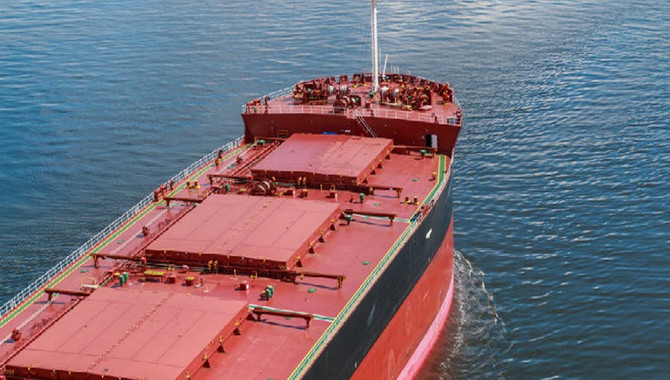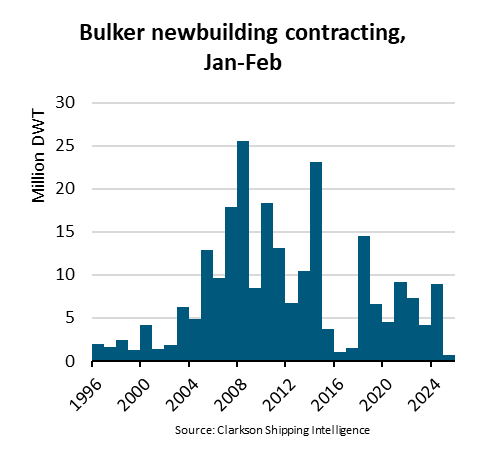The Baltic exchange's main sea freight index slipped for a fifth straight session on Tuesday as a dip in capesize rates eclipsed gains in the panamax segment.
The Baltic dry index, which tracks rates for capesize, panamax and supramax vessels ferrying dry bulk commodities, dropped 28 points, or more than 1%, to 2,568.
The capesize index dropped 71 points, or 2.3%, to 3,018, down for a fifth straight session.
Average daily earnings for capesizes, which typically transport 150,000-tonne cargoes of coal and steel-making ingredient iron ore, fell by $582 to $25,032.
Chinese dry bulk demand could take a hit over the next few years, given Beijing's increased focus on technology and high-value manufacturing, indicating “a move away from the more traditional construction and heavy industry,” Peter Sand, chief analyst for shipping association BIMCO, said in a note.
China will strengthen price controls on iron ore, copper, corn and other major commodities in its 14th five-year plan for 2021 to 2025 to address abnormal fluctuations in prices, the state planner said on May 25.
Additionally, “muddying the water is the deteriorating relationship between China and Australia, although the iron ore trade between the two nations looks to be protected as both are highly dependent on it,” Sand said.
China's benchmark iron ore futures jumped more than 7% on reports that steel hub Tangshan plans to ease requirement for production cuts at its mills.
The panamax index rose 41 points, or about 1.5%, to 2,801.
Average daily earnings for panamaxes, which usually carry coal or grain cargoes of about 60,000 tonnes to 70,000 tonnes, increased by $371 to $25,212.
The supramax index dropped 49 points to 2,455.
Source: Reuters
The opinions expressed herein are the author's and not necessarily those of The Xinde Marine News.
Please Contact Us at:
media@xindemarine.com


 Ningbo Containerized Freight Index Weekly Commentar
Ningbo Containerized Freight Index Weekly Commentar  Ningbo Containerized Freight Index Weekly Commentar
Ningbo Containerized Freight Index Weekly Commentar  Ningbo Containerized Freight Index Weekly Commentar
Ningbo Containerized Freight Index Weekly Commentar  BIMCO Shipping Number of the Week: Bulker newbuildi
BIMCO Shipping Number of the Week: Bulker newbuildi  Ningbo Containerized Freight Index Weekly Commentar
Ningbo Containerized Freight Index Weekly Commentar  Ningbo Containerized Freight Index Weekly Commentar
Ningbo Containerized Freight Index Weekly Commentar